Content
An amazing bright waterfall of flowers of the hybrid clematis Cardinal Vyshinsky will become a spectacular decoration of any site. Having studied the features of growing clematis of pruning group 3, caring for the plant will not be difficult. A huge plus of clematis of the Polish selection Cardinal Vyshinsky is frost resistance and unpretentiousness to the planting site.
Description
Hybrid Cardinal Vyshinsky is a compact vine from 2.8 to 3.5 m. The roots of the shrub hybrid are well developed, extending up to 1 m to the sides. When clematis Cardinal Vyshinsky is planted correctly, many thin, densely leafy stems emerge from the root. With the help of tendrils, the vine clings to any support: wood, metal gratings, walls. The leaf blades are large, bright green, 7-8 cm long. Flowers are formed on the shoots of the current year. Peduncles are long.
The magnificent flowers of Cardinal Vyshinsky are usually 12-14 cm in diameter. With good care they reach 20 cm. The color of the petals of the hybrid clematis Cardinal Vyshinsky is an elusive part of the palette from rich reddish to dark pink. When playing with chiaroscuro it gives the impression of a red or burgundy hue.The petals of the hybrid are large, with wavy edges. The tops of the petals often curve towards the peduncle. The center of the flower is expressively contrasting: the base of the stamens is white, the tops are burgundy.
Clematis Cardinal Vyshinsky, planted in a well-lit place, pleases with abundant flowering from June to September, from three to four months. Flowers open for 10-20 days. The authors of the hybrid claim that any exposure is suitable for clematis Cardinal Vyshinsky - south, north, east or west. Although clematis is light-loving, in the sun in the southern regions the plant may partially lose its decorative effect due to the fact that the petals quickly fade and lose color intensity. In the shade of the northern regions, flowering will reach half the potential of hybrid clematis.
The plant is frost-resistant, tolerates temperatures down to minus 34 degrees. The hybrid Cardinal Vyshinsky belongs to the third, strong pruning group and requires shelter for the winter. In summer, clematis needs abundant watering, then the root circle is mulched to maintain moisture. The advantage of the hybrid is its good survival rate and unpretentiousness. In one place, clematis Cardinal Vyshinsky grows up to 15 years. The beautiful flowering vine is also grown in tubs.
Landing
Before purchasing a clematis seedling Cardinal Vyshinsky, they study the conditions for planting a large-flowered vine.
Choosing a place and time for landing
Spring is the optimal time for planting clematis. It is better to plant bare-rooted plants in April, before the buds open. Hybrid seedling in a container - until October.
- There is only one serious requirement for the location of clematis Cardinal Vyshinsky: protection from strong winds or drafts;
- If the vine is planted near buildings, a permanent fence, or to decorate the trunk of an old tree, retreat at least 40-50 cm from these supports;
- Clematis should not be planted in an area where water accumulates after rain or melting snow.
Selection of seedlings
For better survival, buy clematis seedlings in containers. The roots of the vine are checked:
- The roots are 20-30 cm long, collected in a lobe, elastic;
- Shoots are 40-60 cm high, fresh, without damage.
Soil requirements
Clematis grows well in light, loose and fertile soil with an acidity reaction close to neutral.
- To alkalize acidic soil in the fall, dig up the area, adding 200-300 g of lime per 1 square meter. m;
- On heavy soils, arrange high, up to 10-15 cm, drainage at the bottom of the planting hole.
How to plant
For powerful clematis Cardinal Vyshinsky, prepare a spacious hole 60x60 cm and 60 cm deep.
- Drainage is placed at the bottom;
- The fertile layer is mixed with humus or compost, wood ash and 60 g of superphosphate;
The root collars of young vines are deepened by 8-12 cm, divisions from an old bush - up to 20 cm. With this planting, the roots of the plant form a large lobe and developed shoots. Bushy clematis with strong roots tolerate heat and frost more easily.
Care
Caring for an unpretentious plant is not difficult, but for good development and powerful flowering, clematis Cardinal Vyshinsky requires some attention.
Top dressing
In the first year of growth, the vine only needs the fertilizers that were placed in the hole. In subsequent years, clematis are fed starting in early spring.
- It is more convenient to use complex fertilizers, 1-2 tablespoons per bucket of water;
- Then two more plant supports are carried out, before and after flowering;
- Organic fertilizer is also used for the hybrid;
- Potassium fertilizers are used in spring and autumn.
Loosening and mulching
The root zone of the plant is loosened after watering and removed weeds and mulch. Humus, compost, and peat are taken for these purposes in the central regions. In the southern regions, sawdust is also used. Mulch protects the soil and clematis root ball from overheating. At the foot of the hybrid, low-growing plants are also planted for protection from the sun: alyssum, arabis, petunia.
Watering
The Cardinal Vyshinsky hybrid is watered regularly and abundantly. The stream is directed only to the base of the plant, without wetting the clematis leaves. For a young vine, 10-20 liters are enough for one watering, for old bushes - up to 40 liters.
Trimming
Large-flowered hybrid annual vine Cardinal Vyshinsky is pruned in October, before wintering. 3 buds are left, the height of the cut shoots is up to 30 cm.
Shelter for the winter
The trimmed hybrid bush is mulched with humus and covered with spruce branches or agrotextiles. You can’t cover it with sawdust for the winter, as the roots may get trapped.
Disease and pest control
A bush planted on heavy soil may suffer from wilt, which is transmitted by spores. The affected parts are removed.
- As a preventative measure, in March or April, the plant should be shed with a mixture of 200 g of lime or dolomite flour diluted in a bucket of water;
- Spray with a 1% solution of copper sulfate or a mixture of 1 teaspoon of urea and 10 liters of water;
- If clematis gets sick with wilting during the growing season, use the drug “Trichoflor” according to the instructions;
- Fungicides are used to combat powdery mildew and gray mold on the hybrid.
Reproduction
Clematis is propagated by cuttings, dividing the bush and layering.
- Green cuttings are cut so that there is one node on a shoot fragment. Rooted in the substrate, planted in autumn or spring;
- The roots of the bush are cut with a sharp instrument;
- Dig in a healthy shoot, leaving the top. Sprouts that are already strong are transplanted.
Application in landscape design
Clematis is a fertile material for garden design. The magnificent mantle of vines is used for a vertical and horizontal splash of color. They are planted near fences, unsightly walls, and decorate tree trunks and bushes. The liana is also popular as a tub plant.
Reviews
Conclusion
An unpretentious large-flowered hybrid of the 3rd pruning group blooms profusely when planted correctly. The location is chosen taking into account the growing climate zone. By regularly watering, a living curtain is formed from a beautifully flowering vine.
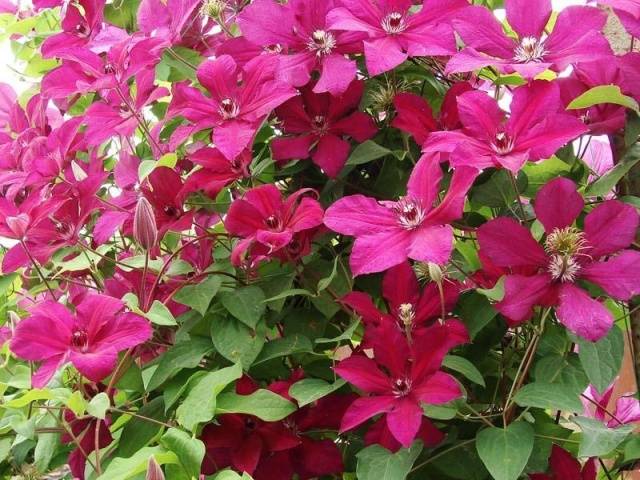
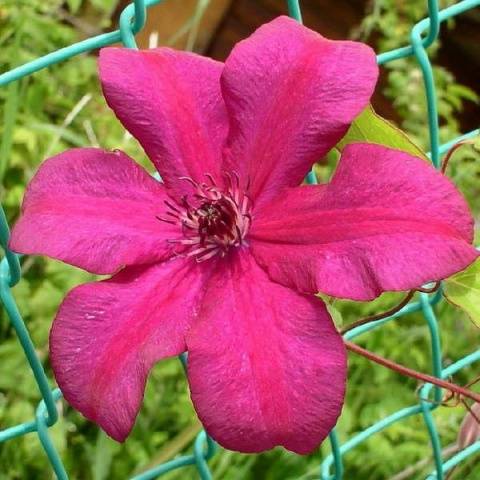
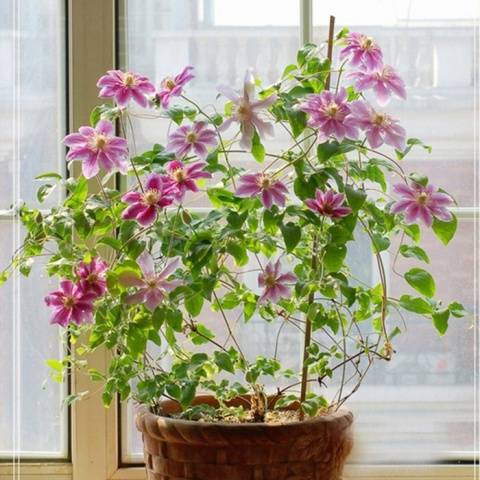
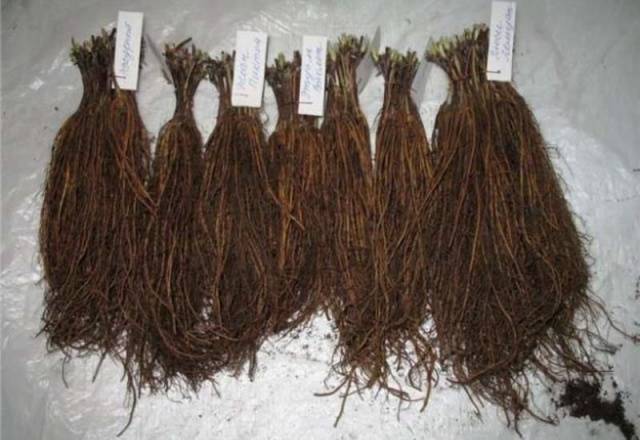
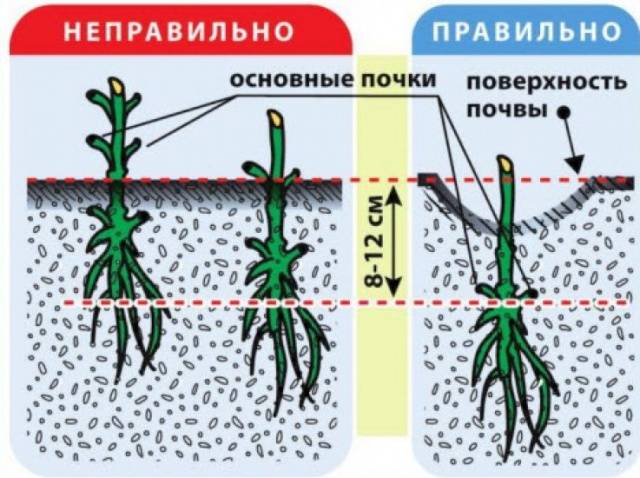
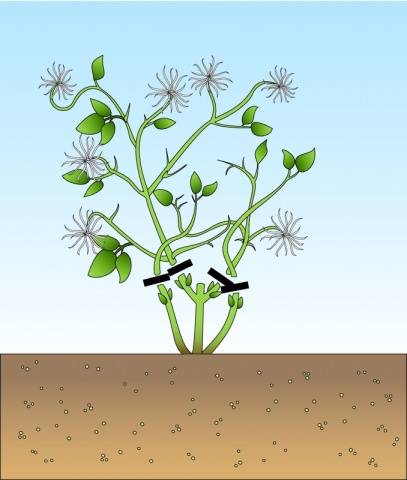
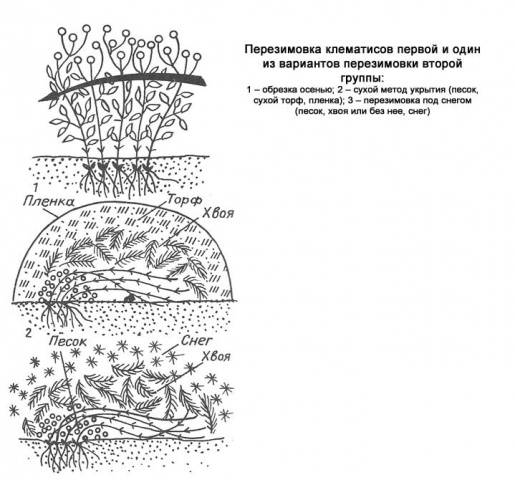
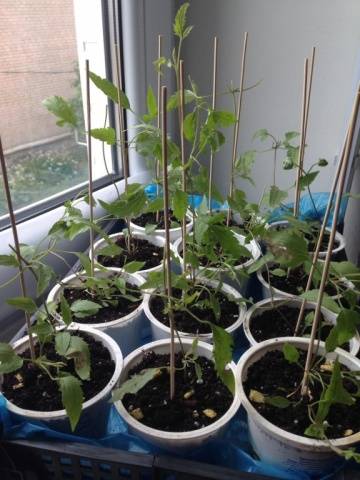
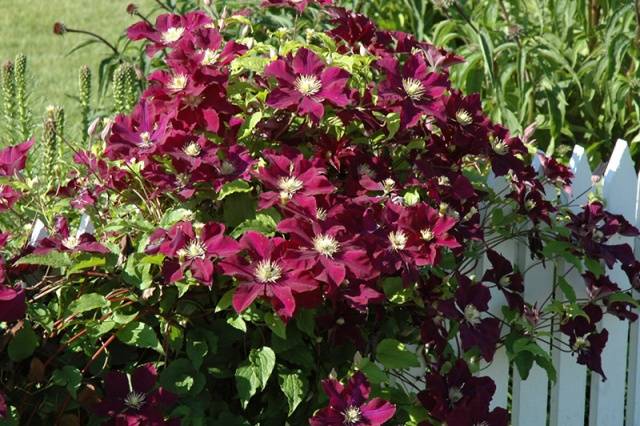
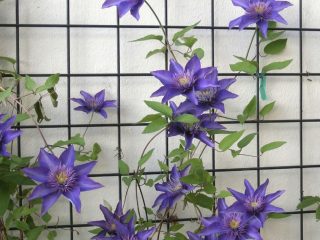
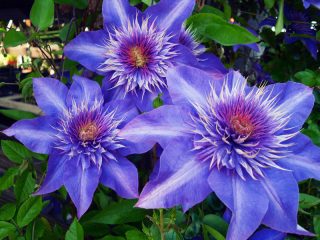

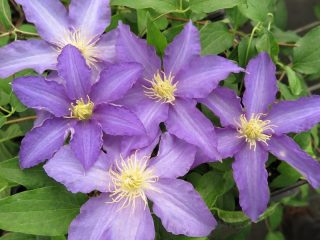
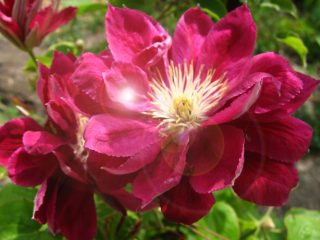
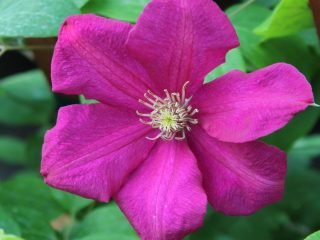


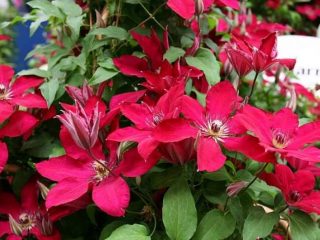
How to properly plant clematis sprouts from a package before summer.